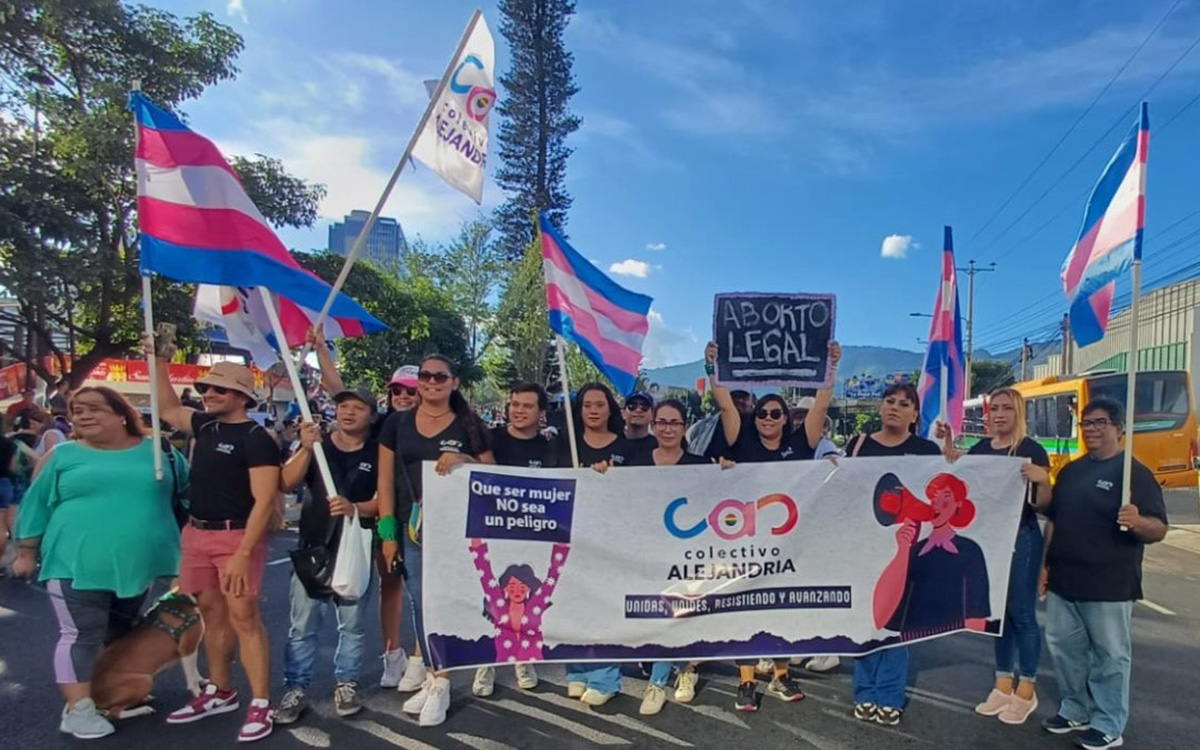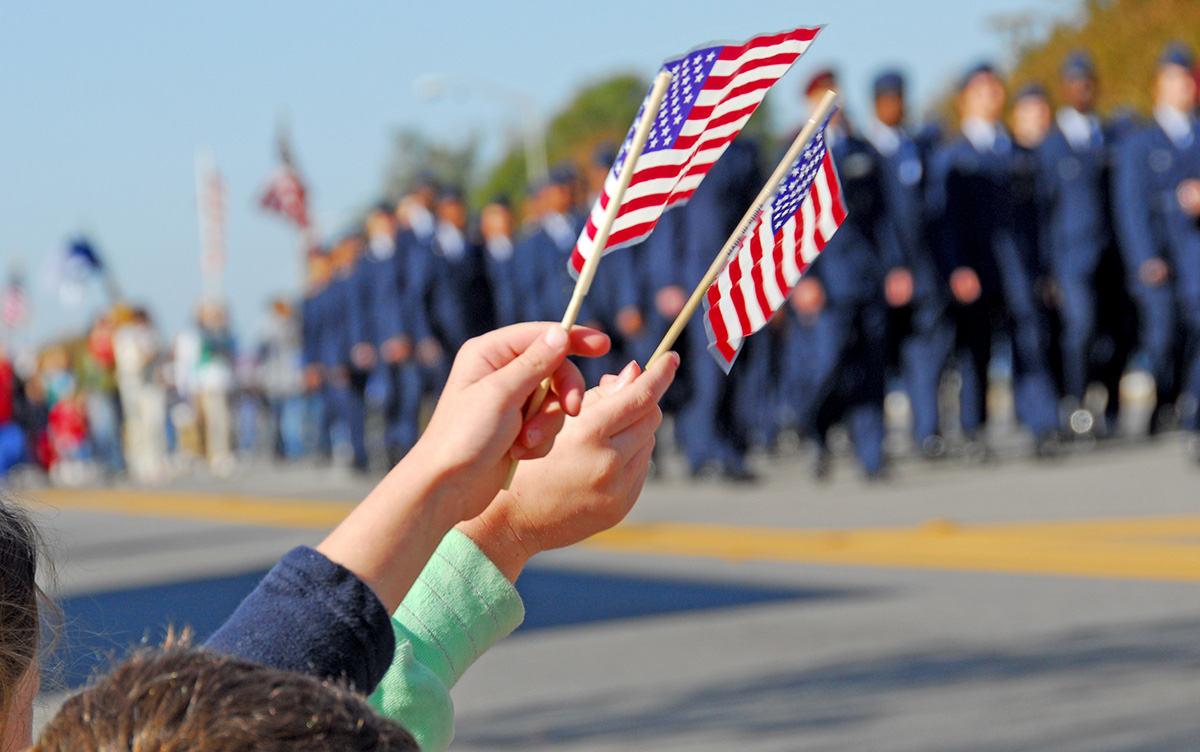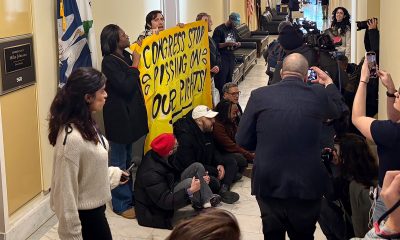Opinions
ROSENSTEIN: Is D.C. prepared for World Pride? Not just yet
An incredible opportunity for the city to shine

The 2024 Pride parade and festival in D.C. were a tremendous success. Congratulations to all who worked so hard on this at Capital Pride, and others, including the mayor’s office, to make it a success. Now it’s onward to the next event, WorldPride 2025.
From all accounts, WorldPride celebrations around the world have been amazing. From Tel Aviv, to Rome, to Sidney, millions have enjoyed them. It is an event awarded to a city by InterPride, the international Pride organization. In 2025, from May 23-June 8, it is D.C.’s turn to shine. The event was awarded to the Capital Pride Alliance. While I know the great people in D.C. can handle this event, I have real concerns over whether the city as a whole will be ready. It will take an incredible amount of work and coordination, to prepare for close to three million people who will descend on D.C. in less than a year.
Since I moved to D.C. in October 1978, it has been a place that supports the LGBTQ community. That was the year Marion Barry was first elected mayor. In early 1979, I attended a dinner, even though not yet out, of what was then called the Gertrude Stein Democratic Club. Barry spoke and thanked the leaders of the Club, and the “GLBT community,” that is what we were called then, for helping him win the mayoralty. Today the club is called the Stonewall Democratic Club. I quickly got involved in the civic life of D.C., and local politics. Over the years there were members of the community on the Council, including Jim Graham and David Catania. Today, Zachary Parker represents Ward 5. As an activist, I have always had positive interactions with the mayors and Council.
Recently, the Washington Post had a column on how much the D.C. Council has placed in the budget for the LGBTQ community. It includes grants for housing, and for the new LGBTQ Community Center. It also has about $5 million for World Pride. It was sad to see some of the negative online comments, some asking why the money wasn’t being spent instead on the poor. Part of the problem is that it was a poorly written column. While talking about WorldPride as good for the economy of the city, it left out any detail, easy to calculate, on how good it will be. How much money will be spent in D.C. by the millions coming here for those two weeks. How much the city will add to its tax revenues. How much small businesses will make and how this benefits workers. This information would have helped people better understand the investment the city is making. I don’t think the budget investment is big enough. This is a giant undertaking, and I’m not sure there are enough people involved. This will be a citywide, multi-state event, because of our close-in suburbs. At least it should be. There should be planning for events in all eight wards of the city. Council members and community leaders in each ward, should be working on events, ensuring the businesses and residents in their wards feel a part of, and benefit from, the huge influx of tourists to our city. There will be concerts, dances, sporting events, and a Human Rights Conference. Potentially there could be an HIV/AIDS conference, as major research is going on in D.C.
I question whether those planning for this event have had serious discussions with airlines, and global companies like Amazon, and FedEx, to involve them in funding and sponsoring events. Is there a committee working to involve all the embassies, in planning events beyond a float in the parade? They will all have attendees from their countries here. Like it or not, there will be issues with visas and passports, and people will need help solving their issues. Then there is the worldwide press operation. I can imagine that could be set up in the convention center, or other facility. If D.C. is to get the kind of long-term public relations promotion such an event should bring, organizing that is crucial.
How is the planning group liaising with Congress? How are the couple of hundred members of the Equality Caucus involved? This is the time for them to show their support, while thousands of their own constituents will be visiting D.C. for the event. Maybe WorldPride is time to encourage another push to pass the Equality Act. If Democrats take the House, keep the Senate, and Biden is president, we could pass it. It’s important to bring together HRC, the Victory Fund, the National LGBT Chamber of Commerce, the National Center for Transgender Equality, Trevor Project, Carr Center at Harvard, among others, to work on this and other issues. Each will contribute what they can and each will have ideas. Have the LGBTQ staffing groups on the Hill been involved with WorldPride yet? Then has the Capital Pride Alliance reached out to all the LGBTQ groups in the federal agencies, or to the wealth of talent within the leadership of groups like Whitman-Walker, SMYAL, and the LGBTQ+ Center, as well as those in the surrounding suburbs of Virginia and Maryland? Everyone should be involved.
It is important to find a way to ensure visitors from around the world have a way to easily access information about all the events that will take place during the two weeks of WorldPride, as they plan their trips. This information can be shared through all the embassies, and worldwide press. We know many events, and venues, will require tickets, and reservations. Any traveler knows, having this information well in advance, clearly helps make for a successful trip. The information shared could include information on potential add-on trips to Rehoboth Beach, and other venues.
One of the things we cannot know, is who will be president of the United States at that time. If it is Joe Biden, we are fine. If, God forbid, it’s Donald Trump, that could be scary. How would that impact how federal agencies get involved, how about Homeland Security? All contingencies need to be prepared for.
WorldPride will bring together people from across the country. Young people from San Francisco to rural Mississippi, places where being out is not yet so easy. We must showcase how being free to be who you are will make your life better. We need to showcase the best of the LGBTQ community, and show the world here in the United States, we are working to be truly equal and free. We need to involve all those who support us, and who we support. That includes the corporate community, police departments, and the military. We have fought long and hard to get their support, now is the time for us and them to be proud of it.
We have an incredible opportunity for D.C., and the entire United States, to shine. I urge those doing the planning to involve as many people as you can. Reach out, and let each person, and each group, take an active role in this venture. WorldPride 2025 will be better if you do.
Peter Rosenstein is a longtime LGBTQ rights and Democratic Party activist. He writes regularly for the Blade.
Commentary
Elusive safety: what new global data reveals about gender, violence, and erasure
Movements against gender equality, lack of human rights data contributing factors.

“My identity could be revealed, people can say whatever they want [online] without consequences. [Hormone replacement therapy] is illegal here so I’m just waiting to find a way to get out of here.”
-Anonymous respondent to the 2024 F&M Global Barometers LGBTQI+ Perception Index from Iraq, self-identified as a transgender woman and lesbian
As the campaign for 16 Days Against Gender-Based Violence begins, it is a reminder that gender-based violence (GBV) — both on– and offline — not only impacts women and girls but everyone who has been harmed or abused because of their gender or perceived gender. New research from the Franklin & Marshall (F&M) Global Barometers and its report A Growing Backlash: Quantifying the Experiences of LGBTQI+ People, 2022-2024 starkly show trends of declining safety among LGBTQI+ persons around the world.
This erosion of safety is accelerated by movements against gender equality and the disappearance of credible human rights data and reporting. The fight against GBV means understanding all people’s lived realities, including those of LGBTQI+ people, alongside the rights we continue to fight for.
We partnered together while at USAID and Franklin & Marshall College to expand the research and evidence base to better understand GBV against LGBTQI+ persons through the F&M Global Barometers. The collection of barometers tracks the legal rights and lived experiences of LGBTQI+ persons from 204 countries and territories from 2011 to the present. With more than a decade of data, it allows us to see how rights have progressed and receded as well as the gaps between legal protections and lived experiences of discrimination and violence.
This year’s data reveals alarming trends that highlight how fear and violence are, at its root, gendered phenomena that affect anyone who transgresses traditional gender norms.
LGBTQI+ people feel less safe
Nearly two-thirds of countries experienced a decline in their score on the F&M Global Barometers LGBTQI+ Perception Index (GBPI) from 2022-2024. This represents a five percent drop in global safety scores in just two years. With almost 70 percent of countries receiving an “F” grade on the GBPI, this suggests a global crisis in actual human rights protections for LGBTQI+ people.
Backsliding on LGBTQI+ human rights is happening everywhere, even in politically stable, established democracies with human rights protections for LGBTQI+ people. Countries in Western Europe and the Americas experienced the greatest negative GBPI score changes globally, 74 and 67 percent, respectively. Transgender people globally reported the highest likelihood of violence, while trans women and intersex people reported the highest levels of feeling very unsafe or unsafe simply because of who they are.
Taboo of gender equality
Before this current administration dismantled USAID, I helped create an LGBTQI+ inclusive whole-of-government strategy to prevent and respond to GBV that highlighted the unique forms of GBV against LGBTQI+ persons. This included so-called ‘corrective’ rape related to actual or perceived sexual orientation, gender identity, or expression” and so-called ‘conversion’ therapy practices that seek to change or suppress a person’s gender identity or expression, sexual orientation, or sex characteristics. These efforts helped connect the dots in understanding that LGBTQI+ violence is rooted in the same systems of inequality and power imbalances as the broader spectrum of GBV against women and girls.
Losing data and accountability
Data that helps better understand GBV against LGBTQI+ persons is also disappearing. Again, the dismantling of USAID meant a treasure trove of research and reports on LGBTQI+ rights have been lost. Earlier this year, the US Department of State removed LGBTQI+ reporting from its annual Human Rights Reports. These played a critical role in providing credible sources for civil society, researchers, and policymakers to track abuses and advocate for change.
If violence isn’t documented, it’s easier for governments to deny it even exists and harder for us to hold governments accountable. Yet when systems of accountability work, governments and civil society can utilize data in international forums like the UN Universal Periodic Review, the Convention on the Elimination of All Forms of Discrimination Against Women, and the Sustainable Development Goals to assess progress and compliance and call for governments to improve protections.
All may not be lost if other countries and donors fill the void by supporting independent data collection and reporting efforts like the F&M Global Barometers and other academic and civil society monitoring. Such efforts are essential to the fight against GBV: The data helps show that the path toward safety, equality, and justice is within our reach if we’re unafraid of truth and visibility of those most marginalized and impacted.
Jay Gilliam (he/him/his) was the Senior LGBTQI+ Coordinator at USAID and is a member of the Global Outreach Advisory Council of the F&M Global Barometers.
Susan Dicklitch-Nelson (she/her/hers) is the founder of the F&M Global Barometers and Professor of Government at Franklin & Marshall College.
Commentary
Second ‘lavender scare’ is harming our veterans. We know how to fix it
Out in National Security has built Trans Veterans State and Local Policy Toolkit

Seventy years after the first “lavender scare” drove LGBTQ Americans from public service, a second version is taking shape. Executive directives and administrative reviews have targeted transgender servicemembers and veterans, producing a new wave of quiet separations and lost benefits.
The policy language is technical, but the result is personal. Veterans who served honorably now face disrupted healthcare, delayed credentials, or housing barriers that no act of Congress ever required. Once again, Americans who met every standard of service are being told that their identity disqualifies them from stability.
Out in National Security built the Trans Veterans State and Local Policy Toolkit to change that. The toolkit gives state and local governments a practical path to repair harm through three measurable actions.
First, continuity of care. States can keep veterans covered by adopting presumptive Medicaid eligibility, aligning timelines with VA enrollment, and training providers in evidence-based gender-affirming care following the World Professional Association for Transgender Health Standards of Care Version 8.
Second, employment, and licensing. Governors and boards can recognize Department of Defense credentials, expedite licensing under existing reciprocity compacts, and ensure nondiscrimination in state veterans’ employment statutes.
Third, housing stability. States can designate transgender-veteran housing liaisons, expand voucher access, and enforce fair-housing protections that already exist in law.
Each step can be taken administratively within 90 days and requires no new federal legislation. The goal is straightforward: small, state-level reforms that yield rapid, measurable improvement in veterans’ daily lives.
The toolkit was introduced during a Veterans Week event hosted by the Center for American Progress, where federal and state leaders joined Out in National Security to highlight the first wave of state agencies adopting its recommendations. The discussion underscored how targeted, administrative reforms can strengthen veterans’ healthcare, employment, and housing outcomes without new legislation. Full materials and implementation resources are now available at outinnationalsecurity.org/public-policy/toolkit, developed in partnership with Minority Veterans of America, the Modern Military Association of America, SPARTA Pride, and the Human Rights Campaign.
These are technical fixes, but they carry moral weight. They reaffirm a basic democratic promise: service earns respect, not suspicion.
As a policy professional who has worked with veterans across the country, I see this moment as a test of civic integrity. The measure of a democracy is not only who it allows to serve but how it treats them afterward.
The second “lavender scare” will end when institutions at every level decide that inclusion is an obligation, not an exception. The toolkit offers a way to begin.
For more information or to access the toolkit once it is public, visit outinnationalsecurity.org/toolkit.
Lucas F. Schleusener is the CEO of Out in National Security.

For years, the far right has relied on a familiar infrastructure to wage its political battles: coordinated legal networks, back-channeled money, and an ever-growing pipeline of model legislation that moves quietly from one statehouse to another. What used to be a fringe ecosystem of activist lawyers has matured into something far more muscular. Today, the attacks on LGBTQ Americans—especially transgender people—are not random. They are designed, drafted, and deployed by a disciplined constellation of groups that understand how to move legislation with precision. And if Democrats, civil rights advocates, and national LGBTQ organizations continue treating each bill as an isolated outrage rather than a unified offensive, this machine will keep outpacing them.
Most Americans have never heard of outfits like the Alliance Defending Freedom, the American Principles Project, the Leadership Institute’s law arm, or the network of state-based policy shops that orbit the Heritage Foundation. But these entities now function as the shadow authors of state legislation. The anti-trans sports bans that appeared in more than 20 states did not arise organically; they were cloned from drafts circulated by ADF attorneys. The same is true for bills restricting gender-affirming care, limiting name and pronoun accommodations in schools, or expanding “religious liberty” carve-outs that allow discrimination against LGBTQ employees or customers. Legislators often change a few words, swap in a local sponsor, and reintroduce the same provisions session after session — giving the impression of momentum when, in reality, only a handful of ideologues are writing the nation’s culture-war script.
The operational model is simple: produce a bill, partner with a state-level think tank, recruit a legislator to introduce it, and provide legal testimony to defend it. But the strategic sophistication lies upstream. These groups have spent years cultivating relationships with attorneys general, state solicitors, and conservative judges who are sympathetic to their worldview. They draft legislation with litigation in mind, anticipating which language will survive scrutiny before the federal courts they have worked diligently to remake. They treat policy, politics, and jurisprudence as a seamless ecosystem; meanwhile, LGBTQ advocates are forced to fight on three fronts at once, often with smaller budgets and no comparable network of state-by-state affiliates.
What is most striking now is the acceleration. Bills that used to be test-driven in one or two states are being introduced in a dozen simultaneously. After the Supreme Court’s Dobbs decision, the same legal strategists pushing abortion bans pivoted almost immediately toward restricting trans health care, framing puberty blockers and hormone therapy as “sterilization.” The rhetorical shift was not accidental. It was a deliberate legal construction designed to open the door to future Fourteenth Amendment challenges, should the movement secure a case capable of reaching the Supreme Court. This is not simply a legislative fight; it is the groundwork for long-term judicial warfare.
And yet, Democrats and even national LGBTQ groups often treat these measures as if they were spontaneous outbursts of local prejudice. That is politically naïve. The reason similar bills appear in Idaho, Florida, Tennessee, Kansas, and Ohio at the same time is because they originate from the same set of PDFs stored on the same servers belonging to the same legal networks. The far right has embraced an industrial model of anti-LGBTQ policymaking: mass production, rapid deployment, and coordinated amplification by media channels that echo the same talking points across state lines.
The consequence is that the burden falls on queer people themselves—especially trans people—to respond to an avalanche of bills, hearings, lawsuits, and administrative changes that no individual or small advocacy team can fully track. When you have a network of attorneys feeding language to legislators, drafting amicus briefs, and preparing future litigation strategies in advance, you create an asymmetry that is difficult to counter with reactive press releases or one-off legal challenges. This imbalance of power is not about public opinion, which still supports LGBTQ equality by wide margins. It is about institutional positioning. The far right has placed its lawyers where the pressure points are: in state AG offices, in coordinated legislative caucuses, in judicial clerkships, and in the nonprofit legal trenches where issue fights are shaped long before the public hears about them.
There is a path forward, but it requires abandoning the old model of treating each bill as a separate emergency. LGBTQ organizations need a unified, long-range strategy that mirrors the discipline of the groups attacking them. That means state-by-state legal surveillance, rapid drafting of counter-model legislation, formal partnerships with progressive state AGs, and a standing litigation coalition capable of anticipating—not just responding to—legal threats. It also means investing in local leaders who understand that these bills are symptoms of a national machine, not quirks of their hometown politics.
What’s at stake here is nothing less than the architecture of civil rights in the United States. The far right is attempting to rewrite the legal landscape through volume and repetition, hoping courts will eventually treat these contrived bills as reflections of a shifting national consensus. They are betting that if they introduce enough legislation, in enough states, for enough years, the judiciary will reinterpret LGBTQ equality not as a settled constitutional principle but as a contested social question that can be narrowed or rolled back. Their ultimate goal is not just to restrict trans rights today but to lay the doctrinal groundwork for limiting LGBTQ protections for a generation.
The community can still win this fight, but only if it sees the battlefield clearly. These bills are not local skirmishes—they are coordinated acts of legal engineering. And it is time the pro-equality movement built an equally coordinated system to match them.
Isaac Amend is a writer based in the D.C. area. He is a transgender man and was featured in National Geographic’s ‘Gender Revolution’ documentary. He serves on the board of the LGBT Democrats of Virginia. Contact him on Instagram at @isaacamend
-

 The White House4 days ago
The White House4 days agoTrans workers take White House to court over bathroom policy
-

 Opinions5 days ago
Opinions5 days agoEverything is Everything
-

 Federal Government5 days ago
Federal Government5 days agoHHS ‘peer-reviewed’ report calls gender-affirming care for trans youth dangerous
-

 Congress4 days ago
Congress4 days agoMTG resigns after years of anti-LGBTQ attacks amid Trump feud


















